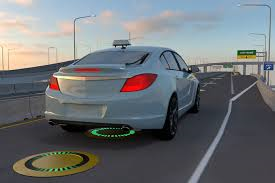
HydroCIS, a data provider, recently conducted a comprehensive analysis comparing the demand patterns for petrol and liquefied petroleum gas (LPG) in July 2023.
The findings of this study have unveiled insights into the consumption trends of these two essential commodities, prompting further exploration into the underlying factors driving these fluctuations.
According to the data provided by HydroCIS, a notable contrast in consumption rates between the two commodities has emerged. Prior to the removal of subsidies, the recorded consumption of petrol stood at 64.96 million litres.
However, in a significant departure from this figure, the daily consumption of petrol, also referred to as PMS, witnessed a substantial reduction in July 2023, plummeting to 52 million litres per day.
This marked decrease of 16.8% has ignited curiosity regarding the causative elements behind this decline.
Tragedy as Nigerian Lady Dies During Her Bridal Shower
In a different trajectory, the consumption of LPG in the same period experienced a remarkable surge.
Displaying a month-on-month increase of 35%, LPG’s consumption soared to 128 thousand tonnes (kT) in July 2023, culminating in a total of 729 kT for the year a remarkable year-on-year growth of 16%.
This sharp contrast in consumption dynamics has laid the foundation for a compelling comparative analysis, inviting a deeper examination of the intricate trends shaping the demand for PMS and LPG.
This data highlights a stark divergence between the two commodities, with PMS undergoing a substantial contraction in consumption while LPG undergoes an impressive escalation in demand.
HydroCIS notes that this observation does not imply a direct causal relationship between the decline in PMS consumption and the concurrent surge in LPG consumption.
it is crucial to highlight that the initial surge in petrol prices between N537 to N540 per litre, saw many Nigerians converting their petrol-powered generators to LPG (liquefied petroleum gas).
Prior to this period, a report jointly published by the Energy Commission of Nigeria (ECN) and the International Renewable Energy Agency (IRENA) noted that Nigeria is Africa’s premier generator importer, boasting an extensive multitude of several million captive generators imported into the country.
This statistic further propelled Nigeria into a prominent global standing as one of the largest generator importers due to power supply challenges. The jump from petrol to LPG-driven generators holds the potential to explain the recent demand shift between both commodities.
Uduma Igu, the Chief Executive Officer of Nanotron Technologies, told Nairametrics that drawing from his experience, the demand shift has occurred in business and residential spaces.
Igu narrated how his hydrocarbon liquids enterprise, incurred a substantial daily expense of up to N10,000 when he was dependent on a petrol generator, due to rolling blackouts.
However, since converting to LPG, his expenses have significantly reduced.
The shift towards adapting petrol generators to operate on LPG reveals Nigeria’s innovative approach to energy utilization.
The petrol-to-LPG conversion holds the potential to alleviate the financial burden on both businesses and households, as affirmed by Uduma Igu, CEO of Nanotron Technologies.













One thought on “HydroCIS: Petrol demand drops by 16.8%, LPG rise 35% in July”